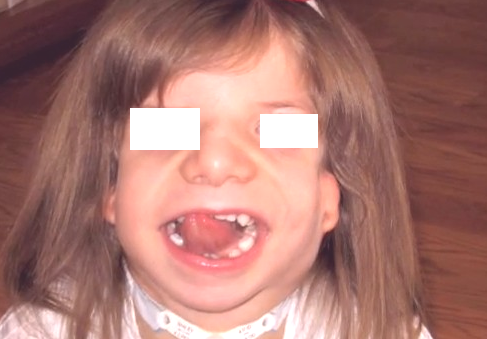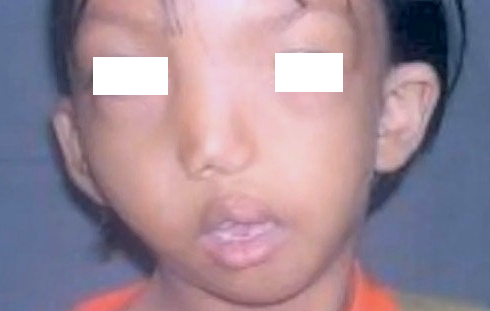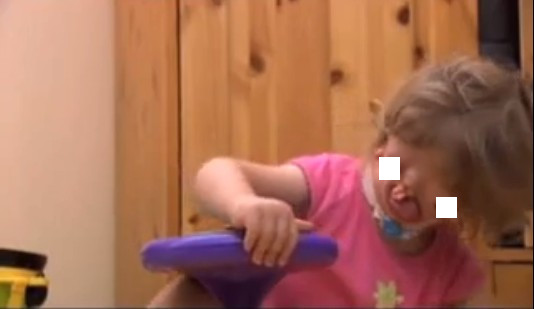Treacher-Collins syndrome is an autosomal dominant condition that is present from birth and affects the growth of bones and other facial tissues.
Treacher Collins syndrome is a very rare disorder and tends to affect about 1 in every 50,000 individuals. It is usually runs in families and is passed on from one generation to another.
Symptoms of Treacher Collins syndrome
The signs and symptom of Treacher Collins syndrome vary greatly, wherein the symptoms may be barely visible or be very severe. Some of the symptoms are discussed below:
- The skull may be irregularly shaped which includes abnormal contraction of the bitemporal area
- Most people affected by Treacher Collins syndrome have facial bones that are underdeveloped, especially the cheek bones. The jaw as well as the chin is very small. A few affected individuals also have a cleft palate, wherein there is an opening or hole in the roof of one’s mouth. Cleft palate can increase the vulnerability to problems and infections of the middle ear and also cause feeding difficulties.
- Uneven arrangement of the teeth, tooth agenesis and deformities of the tooth enamel are some of dental abnormalities associated with Treacher Collins syndrome
- In extreme cases of Treacher Collins syndrome, the underdeveloped facial bones can result in obstruction of the airway in the affected child, leading to several respiratory disturbances and even death.
- The air passage including the throat and the nose, and the oral cavity are generally smaller in size which can result in feeding and breathing difficulties. The caregivers of all infants affected by Treacher Collins syndrome have to be on a constant lookout for respiratory problems in them. Feeding difficulties can also result in loss of weight in the infant. Surgery may be sometimes required to improve feeding and breathing activities.
- Individuals affected by Treacher Collins syndrome generally tend to have eyes that are downward slanting. The eyelashes are thin and sparse. There may be an indentation in the lower eyelids known as a coloboma. A few other affected people may have some other forms of eye irregularities that can result in vision problems and even loss of vision
- Individuals affected by Treacher Collins syndrome usually have normal levels of intelligence
- Individuals with Treacher Collins syndrome may also have abnormally formed, tiny or absent ears. Abnormalities of the middle ear can lead to loss of hearing in nearly 50 percent of cases.
- Hearing loss tends to affect both the ears. This does not mean that there is complete loss of hearing in the individual affected by Treacher Collins syndrome. But middle ear defects can definitely affect the capability of the affected individuals to hear human voices and voices at different levels. Hearing aids go a long way in improving the hearing in such individuals.
- Loss of hearing may affect the ability of the affected children to comprehend the correct pronunciation of words. This can result in impaired or delayed development of language and speech. However, hearing loss does not mean that the child affected by Treacher Collins syndrome needs to fully depend on sign language for communication. Speech therapy, physical therapy and other medical treatments can alleviate the ear disorders and also aid language and speech development.
- Facial morbidity or deformity associated with Treacher Collins syndrome can lead to complications in social and familial relationships, adjustment at school, etc. hence such individuals may need to undergo counseling and have access to all forms of treatment as early as possible.
Causes of Treacher Collins syndrome
Treacher Collins syndrome is caused due to mutations of the TCOF1 gene. This gene is responsible for giving instructions that are vital to the production of a protein called treacle. The exact functions of this protein are not known, but it is believed that it plays an important role in the development of facial bones in the fetus.
Alterations in the TCOF1 gene result in reduced amounts of the protein which in turn sends adverse signals for the facial bones to self-destruct. This causes the distinct symptoms associated with Treacher Collins syndrome.
Treacher Collins syndrome has an autosomal dominant model of inheritance which indicates that a single copy of the mutated gene in each cell is enough to cause the syndrome. The disorder can be passed on from an affected parent to the child, or the child can develop new alterations of the gene.
Treacher Collins Syndrome Treatment
The treatment for Treacher Collins syndrome focuses on alleviating and correcting the various symptoms associated with the disorder. A few ways to treat the symptoms of Treacher Collins syndrome are listed below:
- A tracheostomy may be require by patients affected by extreme cases of the disorder
- Affected children who experience feeding problems can be provided the necessary nutrients via tube-feeding
- Hearing aids can be used to overcome loss if hearing. The use of hearing aids can also aid the improvement of communication and language skills
- Social and emotional issues that may result due to facial deformities in children affected by Treacher Collins syndrome, may get the needed emotional and psychological support from family and counselors.
- Surgery can be used to correct the different physical abnormalities
- Dental reconstruction may be needed for improving dental defects
Treacher Collins Syndrome – Life Expectancy
The life expectancy of people with Treacher Collins Syndrome is that of a normal, healthy person. One in fifty thousand live births are affected with this syndrome. In complicated cases, constricted airways can interfere with the breathing.
Treacher Collins Syndrome – Pictures



